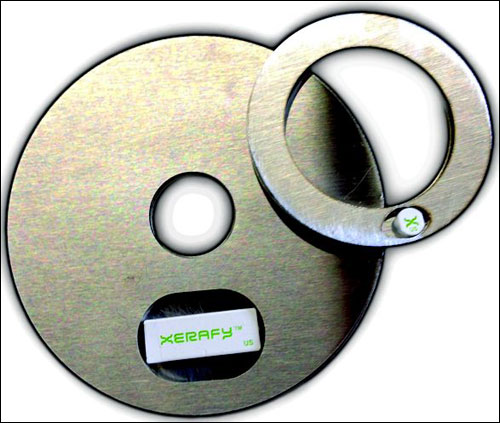Aug 30, 2012When industrial or construction companies employ radio frequency identification on assets and equipment to manage safety or inventory, tag placement can be a challenging task. For example, tags must be welded, wired or screwed onto such items as lift equipment, storage tanks and steel baskets, in the hope that they will not be broken or removed in the rugged environment they inhabit. And although tags can be built into an asset, thereby protecting them from the outside environment, that increases manufacturing time and cost.
Holland 1916 has developed a solution intended to address this problem, with an RFID-enabled stainless-steel washer featuring a Xerafy passive EPC Gen 2 ultrahigh-frequency (UHF) tag embedded in a recess on the washer's surface. The washer can be attached to an item by means of a bolt that is already part of that asset. End users, such as oil and gas firms, manufacturers or construction companies, can utilize handheld readers to capture each washer's ID number and thereby track the item to which the washer is attached, as well as its status if it is being inspected or maintained.

Holland 1916 initially developed the solution approximately two years ago, for a client that required a method of tracking its lifting-clamp products. The customer, which has asked to remain unnamed, provides RFID-enabled versions of its lift products to end users that have an interest in automating data management related to inspections and recertification. Lifting clamps, which pose high liability risks, must be regularly inspected. The client wished to avoid having to screw or weld the tags into place, thus reducing the risk that the tags would be damaged as the lifting clamps were used.
With the RFID solution, product inspectors or owners can carry a handheld RFID device to read that tag's unique ID number. They can then access software that provides details regarding the item, such as when it was manufactured, how frequently and where it has been used, and when it was last inspected, as well as its condition at the time of its last inspection. Staff members can also use the handheld to update data.
With that in mind, Holland 1916 began embedding a high-frequency (HF) 13.56 MHz RFID tag into the washers, for use by that customer. Because inspection is performed with a worker standing directly in front of the lifting clamp to which the washer is attached, HF technology was preferred, in order to ensure that each tag was read during inspection or servicing.
While the lifting-clamp company required HF technology, many of Holland 1916's other customers, such as oil and gas companies, prefer to employ UHF RFID tags to track the locations of items within a large area. In a laydown yard, for example, a company may be searching for certain pieces of heavy equipment. By carrying a handheld reader around the yard in Geiger-counter mode, a user can locate the items, or simply inventory them to maintain a record of which assets are on which work site.
During the past three months, about five pilots involving the RFID-enabled washers have been launched within the United States and Norway. Holland 1916 is currently working with a variety of Xerafy tags, including the Nano-iN, Dash-iN and Dot-iN XS models. The smallest Xerafy tag, the Dot, measures one-quarter inch in diameter. That, Barron says, is small enough to fit inside the sorts of washers typically found on heavy industrial equipment and other assets on which large bolts are commonplace.
According to Barron, the RFID-enabled washers are commercially available now.

